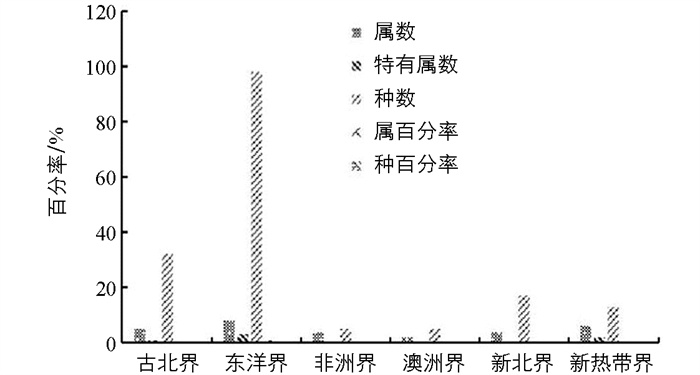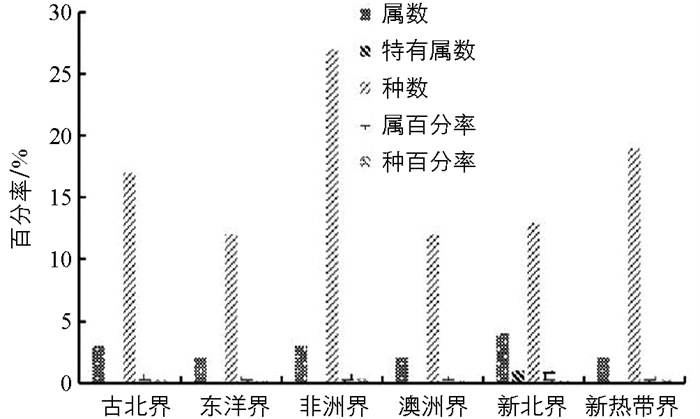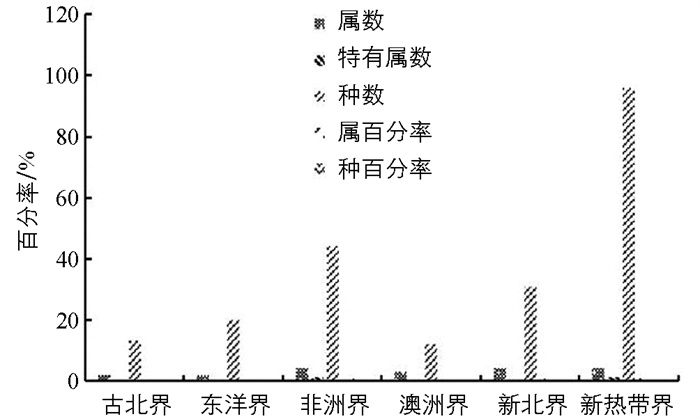|
[1]
|
SWANN J. Family Milichiidae [J]. Zootaxa, 2016, 4122(1): 708-715. doi: 10.11646/zootaxa.4122.1.61
CrossRef Google Scholar
|
|
[2]
|
SWANN J E. Milichiidae (Milichiida flies) Manual of Central American Diptera [M]. Ottawa: National Research Council of Canada, 2010.
Google Scholar
|
|
[3]
|
BRAKE I. Phylogenetic Systematics of the Milichiidae (Diptera, Schizophora) [J]. Entomologica Scandinavica Supplements, 2000, 57: 1-120.
Google Scholar
|
|
[4]
|
SWANN J E. Milichiidae (Diptera: Carnoidea) [M] //Dȃures-biodiversity of the Brandberg Massif, Namibia. Windhoek: National Museum of Namibia, 2000.
Google Scholar
|
|
[5]
|
ROHÁĈEK J. Habitat, Biology and Immature Stages of Milichiella Argyrogaster (Diptera, Milichiidae) [J]. Entomological Problems, 1995, 26(1): 85-92.
Google Scholar
|
|
[6]
|
FERRAR P. A Guide to the Breeding Habits and Immature Stages of Diptera Cyclorrapha [M]. Copenhagen: Scandinavian Science Press, 1987.
Google Scholar
|
|
[7]
|
KROMBEIN K V. Trap-Nesting Wasps and Bees: Life Histories, Nests, and Associates [M]. Washington: Smithsonian Press, 1967.
Google Scholar
|
|
[8]
|
MOSER J C. Complete Excavation and Mapping of a Texas Leafcutting Ant Nest [J]. Annals of the Entomological Society of America, 2006, 99(5): 891-897. doi: 10.1603/0013-8746(2006)99[891:CEAMOA]2.0.CO;2
CrossRef Google Scholar
|
|
[9]
|
SABROSKY C W. Two New Species of Milichiidae, with Miscellaneous Notes on the Family (Diptera) [J]. Entomological News, 1953, 64: 38-42.
Google Scholar
|
|
[10]
|
PAPP L. Some Cavernicolous Diptera of the Geneva Museum [J]. Revue Suisse De Zoologie, 1978, 85(1): 99-106.
Google Scholar
|
|
[11]
|
PAPP L. Cavernicolous Milichiidae (Diptera): Three New Species from Fiji and Sri Lanka [J]. Revue Suisse De Zoologie, 1984, 91: 241-247. doi: 10.5962/bhl.part.81879
CrossRef Google Scholar
|
|
[12]
|
SABROSKY C W. Milichiidae and Chloropidae (Diptera) from the Batu Caves, Malaya [J]. Pacific Insects, 1964, 6(2): 308-311.
Google Scholar
|
|
[13]
|
ROBINSON M H, ROBINSON B. Associations Between Flies and Spiders: Bibiocomme- Nsalism and Dipsoparasitism [J]. Psyche, 1977, 84(2): 150-157. doi: 10.1155/1977/26019
CrossRef Google Scholar
|
|
[14]
|
MELO G A R. Notes on the Nesting Biology of Melipona Capixaba (Hymenoptera, Apidae) [J]. Journal of the Kansas Entomological Society, 1996, 69(2): 207-210.
Google Scholar
|
|
[15]
|
ST J K DONISTHORPE H. The Guests of British Ants; Their Habits and Life Histories [M]. London: George Routledge & Sons, 1927.
Google Scholar
|
|
[16]
|
SIVINSKI J. MARSHALL S A, PETERSSON E. Kleptoparasitism and Phoresy in the Diptera [J]. Florida Entomologist, 1999, 82(2): 179-197. doi: 10.2307/3496570
CrossRef Google Scholar
|
|
[17]
|
SIVINSKI J, STOWE M. A Kleptoparasitic Cecidomyiid and Other Flies Associated with Spiders [J]. Psyche, 1980, 87: 337-348. doi: 10.1155/1980/27685
CrossRef Google Scholar
|
|
[18]
|
EISNER T, EISNER M, DEYRUP M. Chemical Attraction of Kleptoparasitic Flies to Heteropteran Insects Caught by Orb-Weaving Spiders [J]. Current Protocols in Human Genetics, 1991, 88(18): 8194-8197.
Google Scholar
|
|
[19]
|
BRANTIES N B M. Flower Morphology of Aristolochia Species and the Consequences for Pollination [J]. Acta Botanica Neerlandica, 1980, 29: 212-213.
Google Scholar
|
|
[20]
|
WOLDA H, SABROSKY C W. Insect Visitors to Two forms of Aristolochia pilosa in Las Cumbres, Panama [J]. Biotropica, 1986, 18(4): 295-299. doi: 10.2307/2388572
CrossRef Google Scholar
|
|
[21]
|
DEEMING J C. Milichiidae, Carnidae (Diptera: Cyclorrhapha) from the Arabian Peninsula [J]. Fauna of Arabia, 1998, 17: 147-157.
Google Scholar
|
|
[22]
|
SABROSKY C W. A catalogue of the Diptera of the Americas South of the United States [D]. Sao Paulo: Universidade de Sao Paulo, 1973.
Google Scholar
|
|
[23]
|
ABD EL-HALIM A S, MOSTAFA A A, ALLAM K A. Dipterous Flies Species and Their Densities in Fourteen Egyptian Governorates [J]. Journal of the Egyptian Society of Parasitology, 2005, 35(1): 351-362.
Google Scholar
|
|
[24]
|
ARNETT R H. American Insects: a Handbook of the Insects of America North of Mexico [M]. New York: Van Nostrand Reinhold, 1985.
Google Scholar
|
|
[25]
|
BEARDSLEY J W. Insects and other Terrestrial Arthropods from the Leeward Haeaiian Islands [J]. Proceedings of the Hawaiian Entomological Society, 1966, 19(2): 157-185.
Google Scholar
|
|
[26]
|
BESCHOVSKI V L. Review of families Milichiidae and Carnidae from Bulgaria (Insecta: Diptera) [J]. Acta Zoologica Bulgarica, 2004, 56: 129-135.
Google Scholar
|
|
[27]
|
BICKLEV W E, SEEK T R. Insects in four Maryland Marshes. Agricultural Experiment Station University of Maryland College Park, Maryland [J]. Miscellaneous Publication, 1975, 870: 1-27.
Google Scholar
|
|
[28]
|
BRAKE I, FREIDBERG A. Revision of Desmometopa Loew (Litometopa Sabrosky) (Diptera: Milichiidae), with Descriptions of Six New Species [J]. Proceedings of the Entomological Society of Washington, 2003, 105(2): 265-282.
Google Scholar
|
|
[29]
|
BRAKE I. Bomeomyia, a New Genus and Two New Species of Milichiida (Diptera, Schizophora) [J]. Zootaxa, 2004, 627(1): 1-8. doi: 10.11646/zootaxa.627.1
CrossRef Google Scholar
|
|
[30]
|
BROCHU K, WHEELER T A. Systematics and Ecology of the Nearctic Species of Neophyllomyza (Diptera: Milichiidae) [J]. The Canadian Entomologist, 2009, 141(2): 103-111. doi: 10.4039/n09-001
CrossRef Google Scholar
|
|
[31]
|
BUTLER G D. Insects and other Arthropods from Laysan Island [J]. Proceedings of the Hawaiian Entomological Society, 1963, 18(2): 237-244.
Google Scholar
|
|
[32]
|
CARLES-TOLRÁ M. Taxonomic Status of Three Acalyptrate Dipterous Species (Diptera: Milichiidae, Chiropteromyzidae) [J]. Heteropterus Revista de Entomologia, 2009, 9(2): 105-110.
Google Scholar
|
|
[33]
|
COFFEY M D. Studies on the Association of Flies (Diptera) with Dung in Southeastern Washington [J]. Annals of the Entomological Society of America, 1966, 59(1): 207-218. doi: 10.1093/aesa/59.1.207
CrossRef Google Scholar
|
|
[34]
|
DAWAH H A, ABDULLAH M A. New Records of Some Filth Flies Species (Diptera: Milichiidae) in Southwest Saudi Arabia [J]. Saudi Journal of Biological Sciences, 2007, 14(2): 263-270.
Google Scholar
|
|
[35]
|
DEEMING J C, BÁEZ M. Some Milichiidae (Diptera, Cyclorrhapha) from the Canary Islands [J]. Entomologist's Monthly Magazine, 1985, 121: 63-69.
Google Scholar
|
|
[36]
|
DREES M. Nachweis Von Phyllomyza Longipalpis Und Gymnochiromyia Inermis (Diptera: Milichiidae et Chyromyidae) in Westfalen [J]. Decheniana, 2004, 157: 129-130.
Google Scholar
|
|
[37]
|
EVERLY R T. Spiders and Insects Found Associated with Sweet Corn, with Notes on the Food and Habits of Some Species [J]. Ohio State Journal of Science, 1940, 40(3): 143-146.
Google Scholar
|
|
[38]
|
FAST E, WHEELER T A. Faunal inventory of Brachycera (Diptera) in an Old Growth Forest at Mont Saint-Hilarie Quebec [J]. Fabreries, 2004, 29(1): 1-15.
Google Scholar
|
|
[39]
|
FLOREN A. Diversity and Distribution of Diptera in the Canopy of Primary and Disturbed SE- Asian Lowland Rain Forests [J]. Studia Dipterologica, 2004, 10(2): 367-379.
Google Scholar
|
|
[40]
|
GRENSTED L W. On the Gender of the Generic Names Desmometipa and Leptomentopa (Diptera, Milichiidae) [J]. Entomologist's Monthly Magazine, 1956, 92: 405.
Google Scholar
|
|
[41]
|
HARDY D E. Additons and Corrections to Bryan's Check List of the Hawaiian Diptera [J]. Proceedings of the Hawaiian Entomological Society, 1952, 14(3): 443-484.
Google Scholar
|
|
[42]
|
HENNIG W. Beitrag zur Kenntnis der Milichiiden-Larven [J]. Beiträge zur Entomologie, 1956, 6: 138-145.
Google Scholar
|
|
[43]
|
HENNIG W. Die Familien der Diptera Schizophora [J]. Beiträge zur Entomologie, 1958, 8: 753-660.
Google Scholar
|
|
[44]
|
HICKS E A. Check-List and Bibliography on the Occurrence of Insects in Birds' Nests [J]. Iowa State College Journal of Science, 1962, 3: 233-348.
Google Scholar
|
|
[45]
|
HICKS E A. Check-List and Bioliography on the Occurrence of Insects in Birds' Nests [J]. Iowa State College Journal of Science, 1971, 46: 123-338.
Google Scholar
|
|
[46]
|
MITSUHIRO I W A S A. The Genus Desmometopa Loew (Diptera, Milichiidae) of Japan [J]. Medical Entomology and Zoology, 1996, 47(4): 347-353.
Google Scholar
|
|
[47]
|
IWASA M. A New Species of the Genus Aldrichiomyza Hendel (Diptera, Milichiidae) from Japan [J]. Japanese Journal of Entomology, 1997, 65(4): 826-829.
Google Scholar
|
|
[48]
|
MITSUHIRO I W A S A. The Genus Milichiella Giglio-Tos (Diptera, Milichiidae) of Japan [J]. Medical Entomology and Zoology, 1999, 50(1): 27-32.
Google Scholar
|
|
[49]
|
MITSUHIRO I W A S A. The Genus Phyllomyza Fallén (Diptera: Milichiidae) from Japan, with Descriptions of Four New Species [J]. Entomological Science, 2003, 6(4): 281-288.
Google Scholar
|
|
[50]
|
MITSUHIRO I W A S A. New Species and Records of the Genera Milichia Meigen and Milichiella Giglio-Tos (Diptera, Milichiidae) from the Oriental Region and Seram Island [J]. Entomological Science, 2011, 14(2): 192-197.
Google Scholar
|
|
[51]
|
IWASA M. Contribution to the Knowledge of the Japanese Milichiidae (Diptera), with Descriptions of Two New Species [J]. Zootaxa, 2019, 4551(5): 571-582.
Google Scholar
|
|
[52]
|
JOSEPH A N T, PARUI P. Filth inhabiting flies (Diptera) of Calcutta City [J]. Bulletin of the Zoological Survey of India, 1980, 3(1/2): 1-12.
Google Scholar
|
|
[53]
|
KUMARA T K, ABU HASSAN A, CHE SALMAH M R, et al. A Report on the Pupae of Desmometopa Sp. (Diptera: Milichiidae) Recovered from a Human Corpse in Malaysia [J]. Tropical Biomedicine, 2010, 27(1): 131-133.
Google Scholar
|
|
[54]
|
LEVESQUE-BEAUDIN V, MLYNAREK J J. Revision of Nearctic Paramyia Williston (Diptera: Milichiidae) [J]. Zootaxa, 2020, 4732(1): 4732.
Google Scholar
|
|
[55]
|
LOPEZ A. News on Insects Considered as Spider Commensals and Their Hosts [J]. British Arachnological Society, The Newsletter, 1984, 40: 3-4.
Google Scholar
|
|
[56]
|
Trap-Flower Fly Pollination in East African Ceropegia L. (Apocynaceae) [J]. International Journal of Tropical Insect Science, 2004, 24(1): 55-72.
Google Scholar
|
|
[57]
|
OKLAND B. A Review of Species and New Rearing Habitats of the Family Milichiidae (Diptera) in Norway [J]. Fauna norvegica, 1998, 45: 121-123.
Google Scholar
|
|
[58]
|
PAPP L. Milichiidae and Carnidae (Diptera) from Mongolia [J]. Acta Zoologica Hungariae, 1976, 22(3/4): 369-387.
Google Scholar
|
|
[59]
|
PAPP L. New Species and Records of Hungarian Odiniidae, Milichiidae and Carnidae (Diptera) [J]. Acta Zoologica Hungariae, 1977, 23: 171-181.
Google Scholar
|
|
[60]
|
PAPP L. Milichiidae and Carnidae from Afghanistan [J]. Folia Entomologica Hungarica, 1979, 32(1): 105-109.
Google Scholar
|
|
[61]
|
PAPP L. Cavernicolous Milichiidae (Diptera): Three New Species from Fiji and Sri Lanka [J]. Revue Suisse De Zoologie, 1984, 91(2): 241-247.
Google Scholar
|
|
[62]
|
PAPP L. Three New Milichiid Species (Diptera, Milichiidae) from Hungary [J]. Annales historico-Naturales Musei Nationalis Hungarici, 1993, 85: 133-139.
Google Scholar
|
|
[63]
|
PAPP L. A New Genus of Phyllomyzinae (Diptera: Milichiidae) from Laos and Vietnam [J]. Acta Zoologica Academiae Scientiarum Hungaricae, 2016, 62(4): 347-354.
Google Scholar
|
|
[64]
|
ROSSI W, WEIR A. New Species of Stigmatomyces from Asia [J]. Mycologia, 2011, 103(1): 131-134.
Google Scholar
|
|
[65]
|
SABROSKY C W. East African Milichiidae and Chloropidae (Diptera) [J]. Stuttgater Beiträge zur Naturkunde, 1965, 138(1): 1-8.
Google Scholar
|
|
[66]
|
SABROSKY C W. A Synopsis of the World Species of Desmometopa Loew (Diptera, Milichiidae) [J]. Contributions in American Entomologica Insects, 1983, 19(8): 1-69.
Google Scholar
|
|
[67]
|
SABROSKY C W. A New Species of Leptometopa (Diptera, Milichiidae) from Madagasian Pollinating Ceropegia (Asclepiadaceac) [J]. Proceeding of the Entomological Society of Washington, 1987, 89(2): 242-243.
Google Scholar
|
|
[68]
|
XI Y Q, YANG D. Four New Species of Phyllomyza Fallén from China (Diptera, Milichiidae) [J]. Zootaxa, 2013, 3718(6): 575-582.
Google Scholar
|
|
[69]
|
XI Y Q, YANG D. Neophyllomyza (Diptera: Milichiidae) Recorded from China with Description of Three New Species [J]. Florida Entomologist, 2014, 97(4): 1640-1647.
Google Scholar
|
|
[70]
|
XI Y Q, YANG D, YIN X M. New Phyllomyza Fallen, 1810 (Diptera, Milichiidae) from Tibet with a Key to Species of China [J]. Oriental Insects, 2019, 52(2): 177-190.
Google Scholar
|
|
[71]
|
XI Y Q, YANG D, YIN X M. Three New Species of the Genus Neophyllomyza Melander (Diptera, Milichiidae) from China, with a Revised Key to the Chinese Species [J]. Zookeys, 2019, 867: 123-137.
Google Scholar
|
|
[72]
|
XI Y Q, ZHU Y Q, LIU C, et al. Three New Species of Phyllomyza Fallen (Diptera: Milichiidae) from Yintiaoling National Nature Reserve of Chongqing, with an Updated Key from China [J]. Zootaxa, 2023, 5257(1): 115-122.
Google Scholar
|
|
[73]
|
申效诚, 时振亚. 河南昆虫分类区系研究: 第二卷, 伏牛山区昆虫[M]. 北京: 中国农业科技出版社, 1998.
Google Scholar
|
|
[74]
|
钱怡顺, 钱昱含, 徐正会, 等. 云南哀牢山自然保护区蚁科昆虫区系分析[J]. 河南农业大学学报, 2021, 55(3): 485-494.
Google Scholar
|










 DownLoad:
DownLoad: